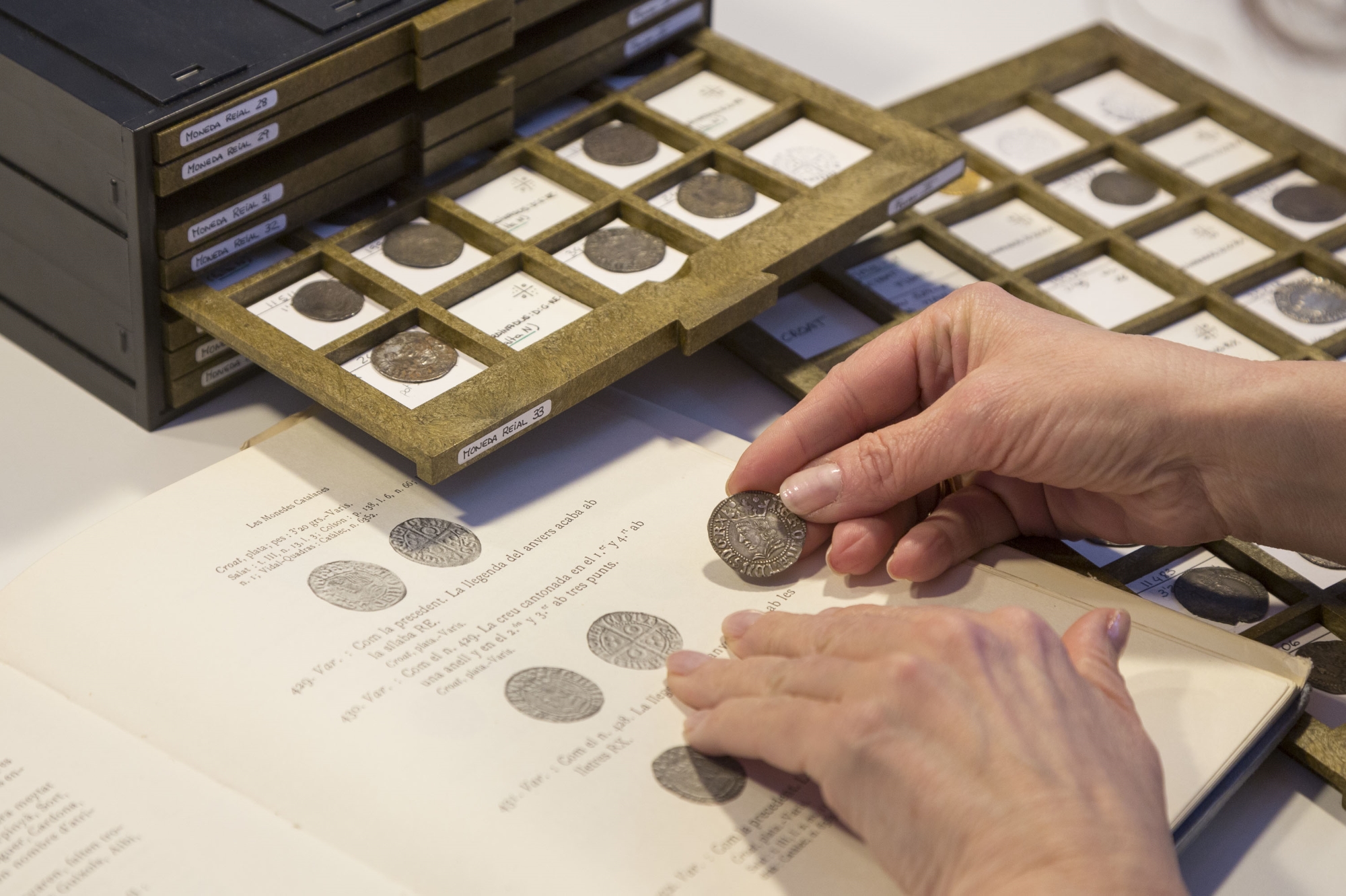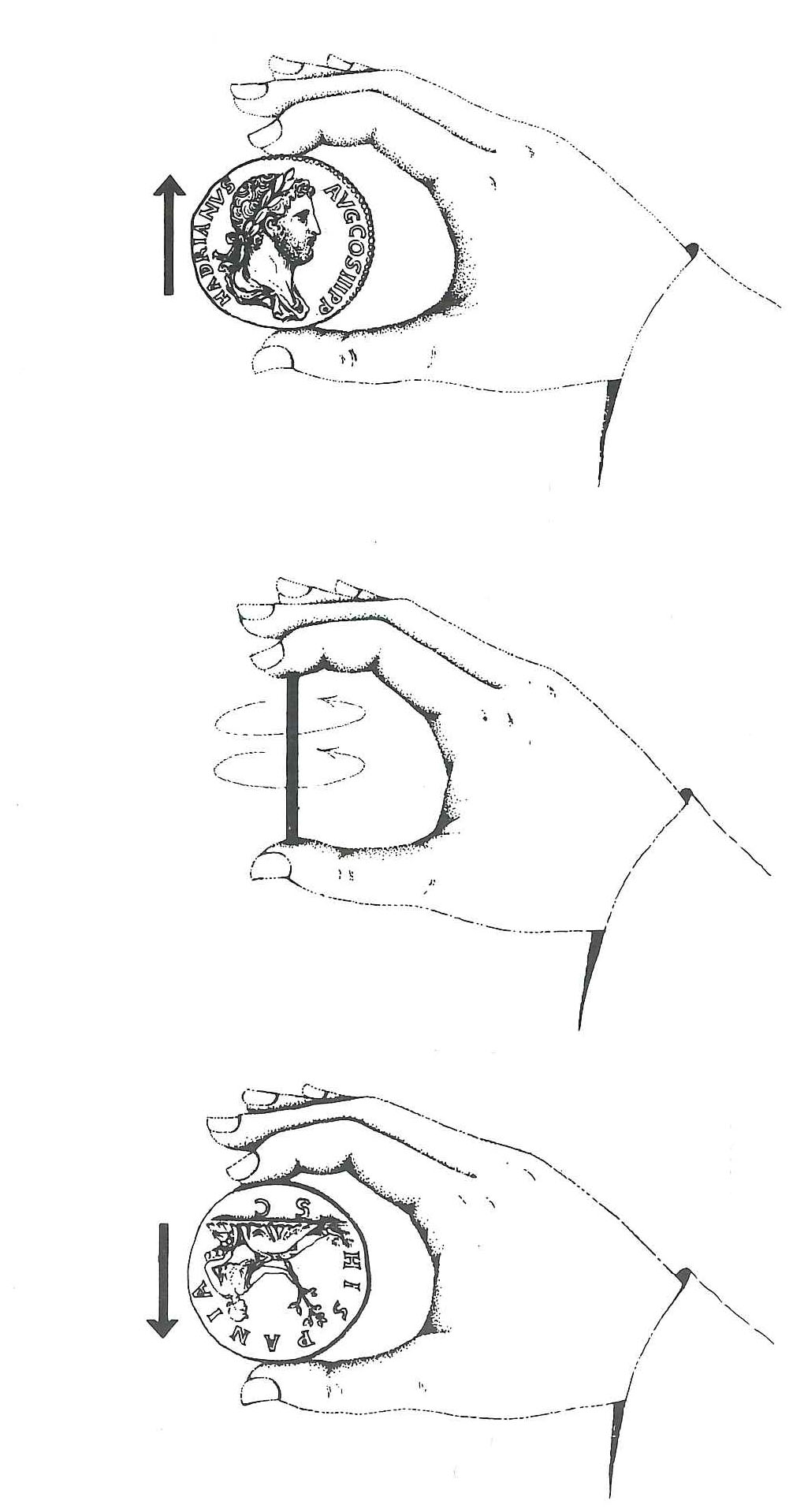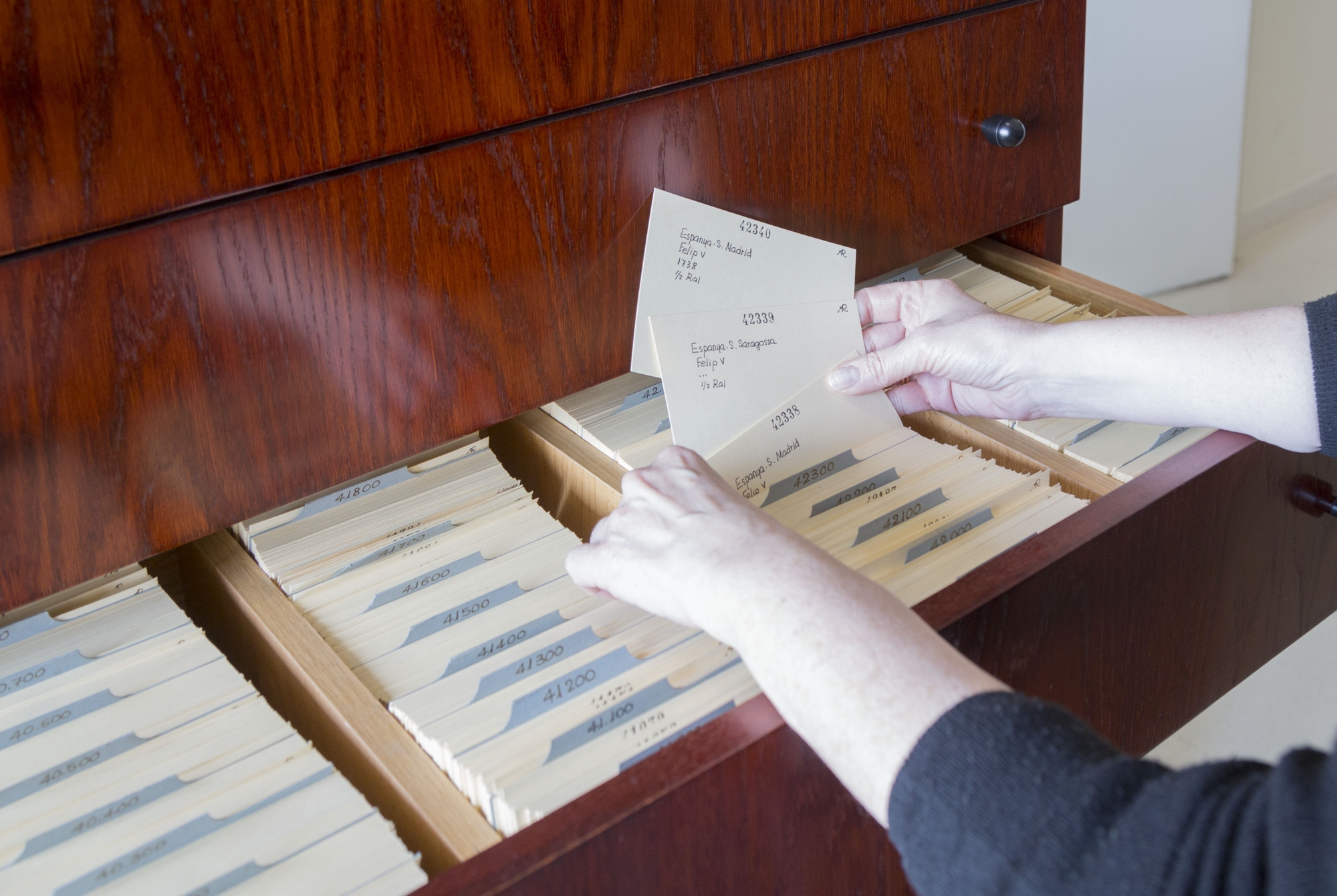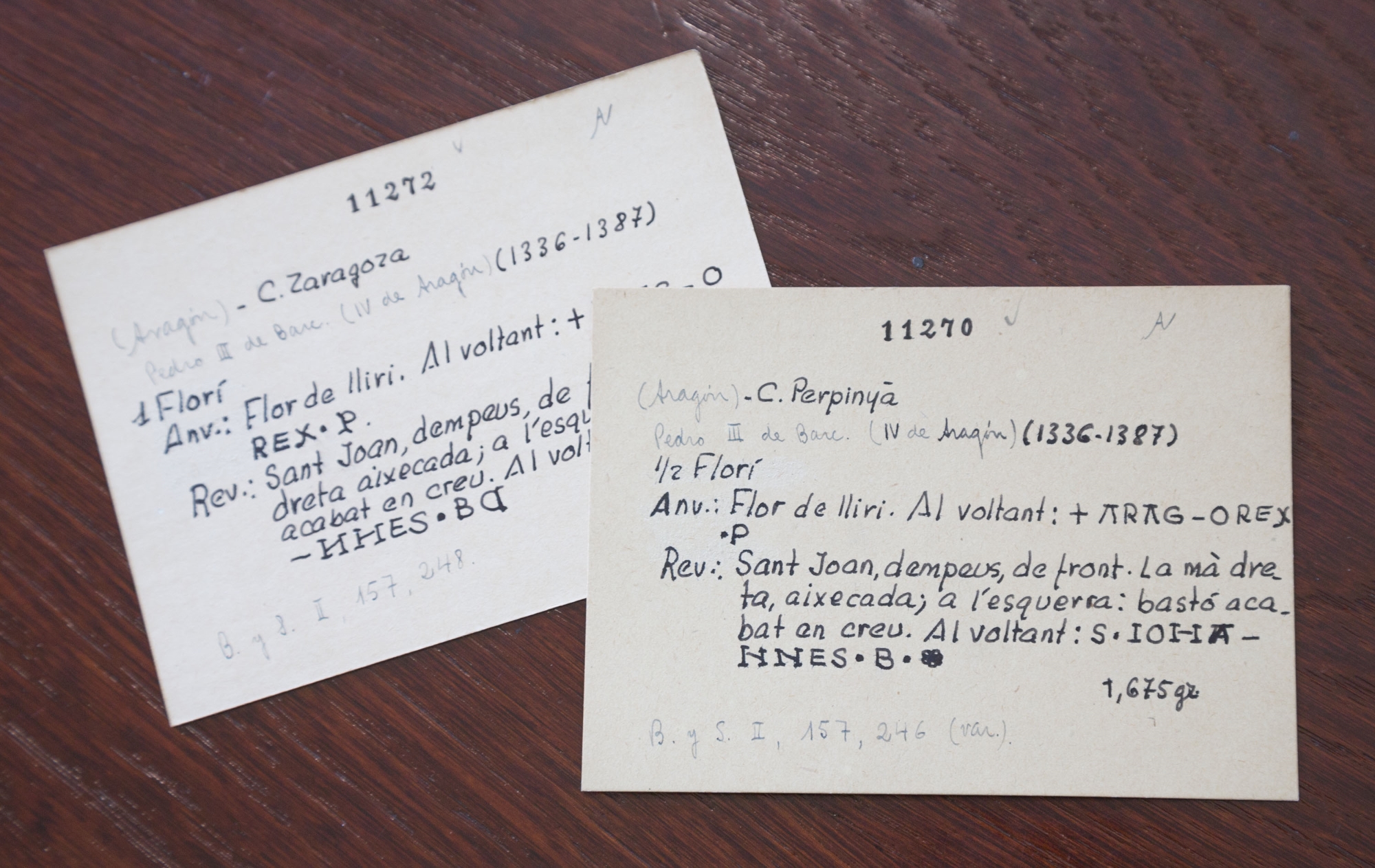Maria Clua
As a general rule, whenever I am asked what I do, my reply causes a certain amount of expectation. Let me explain:
– If I say, “I work in a museum,” the other person usually says, “Oh, how interesting! Which one?”
– If I say, “I’m an archaeologist,” the following comment is, “How nice, like Indiana Jones,” to which I usually reply, “Yes very nice, but it’s not like Indiana Jones.”
– If I say, “I’m a numismatist,” the other person’s face very often changes, with a look of ‘What is she saying?’ and they ask, “A numiswhat?” But they immediately add, “Coins! I’ve got a very old coin that belonged to my great-great grandfather. How much do you think it’s worth?”
Then begins a job of explaining and reasoning, which after so many years I think is easier to understand. Being a numismatist is a mixture of everything I have said, as the training or study course to be a numismatist traditionally derives from the branch of history and archaeology. The place where a numismatist works is a cultural institution devoted to the conservation and study of the patrimony, generally a museum. Although the main task is not to determine the market value of coins, we do have tools to be able to evaluate pieces historically.
The word “numismatics” is derived from Latin, from the genitive of numisma, and also from the Greek word νόμισμα, words that mean “coin”. The current definition according to the Enciclopèdia Catalana is therefore: The science that studies the origins and the development, in both space and time, of coinage, considering it to be not a simple element of exchange, but a historical, social, economic and artistic monument or testimony. This is how, since 1932, the Numismatic Cabinet of Catalonia (Gabinet Numismàtic de Catalunya, GNC) has taken care of, conserved, studied and disseminated the numismatic patrimony of Catalonia.

Josep Amorós, first curator of GNC, in the work room in the Palau Nacional. On the desk there are all the things necessary for studying a coin: weighing scales, a slide gauge, magnifying glasses, bibliography and a file to complete.
Recording, classifying and studying at the GNC
But what is done in the Cabinet? What is the daily job of a conservator of the GNC? The GNC’s collections are made up of more than 155,000 pieces, most of them metal coins, but in the reserves we also keep paramonetary objects such as tokens, counters, lead weights, pellofes. We also have a collection of paper money, banknotes, vouchers, bonds and credit cards. Traditionally, however, anything that is small, round and metallic is also conserved in numismatic cabinets and museums, so we also have medals – in all their variations: artistic, commemorative, proclamatory, historical and religious, and badges and stamps. What’s more, according to the above-mentioned definition, we also conserve everything to do with coinage and its manufacture, metrological objects and those which at one time or another have been part of the production system.
The basic or physical data of a piece
Since 1932 the main job of the GNC conservators has been to learn about, classify and record all the materials in the collections. Although the method of working is very similar for all periods, the registration techniques have been changing and developing over the years. The basic rule or international convention when recording a piece is to make a note of the weight, the diameter and the position of the coin’s dies, whatever the coin’s date of issue. These three values are those that identify the piece physically, its identity document. As a general rule the weight is expressed in grams (g). From the creation of the coin a specific weight has been established for each nominal value, but there are always slight variations above or below what is established by the decree of issue or the issuing authority, which are what make the piece unique. The diameter, expressed in millimetres, may vary too, especially in hammered coins, because depending on the blow received by the disk, the module is slightly different. The position of the dies or the axes, expressed in hours (h), or depending on the period, in degrees or arrows, is the relationship between the position of the iconography on the obverse and the reverse of the coin, something quite important for coins struck by hand.
It is also important to note the coin’s degree of wear and tear, above all if it is a piece from a hoard, as this information will help to establish a date when the hoard was hidden.
Identifying details
With the physical data associated with an inventory number, which is the identification given to a piece when it enters the museum’s collection, we can open a registration file which must also include information about: the issuing authority; the date of issue or moment when the coin was minted or made; the mint or territory where the piece was made; the description of the obverse and the reverse, which has to include a literal transcription of the inscription that runs round the coin or medal (legend) and a brief description of the image or device that is engraved on it.
To be thorough the file ought to include bibliographical data referring to the piece. Moreover, it is also very important to conserve the information about the provenance of pieces:
–if it is an archaeological find: the name of the site, location, stratum number and materials accompanying it.
– if it is a purchase: details of the acquisition, and if possible, which collection it comes from, or the previous owners.
– if it is a donation: information about the person who has deposited the piece, date and year of admission, and the way in which they wish to appear on the cartouche if the object is exhibited.
Before the digital age all this information was recorded on hand-written paper files that were placed in order by the correlative registration number in a filing cabinet. Nowadays, at the MNAC this information is entered in the registration program of the Museum Plus (M+) collections system. In this respect, there are two lines of work: one of entering the GNC’s old collections in the M+, and the other, doing the same with all the department’s new acquisitions.
Related links
Campo, M.; Estrada-Rius, A.; Clua, M., Numismatics guidebook, Barcelona, 2004
La moneda antiga. XXVIII Curs de documentació
M. Campo, Numismàtica: Dades per a la documentació numismàtica , Generalitat de Catalunya, Departament de Cultura, 1987.
Gabinet Numismàtic de Catalunya












